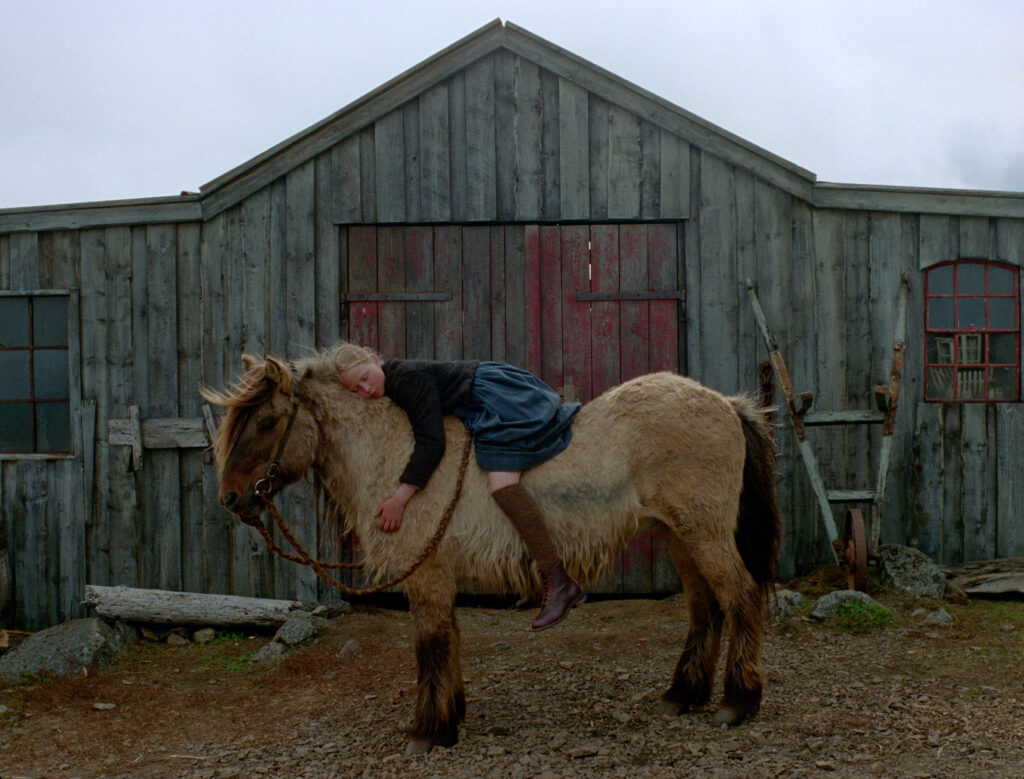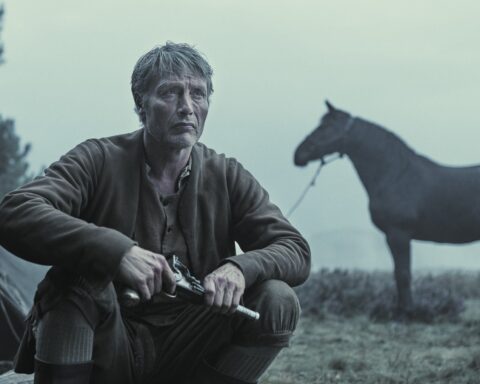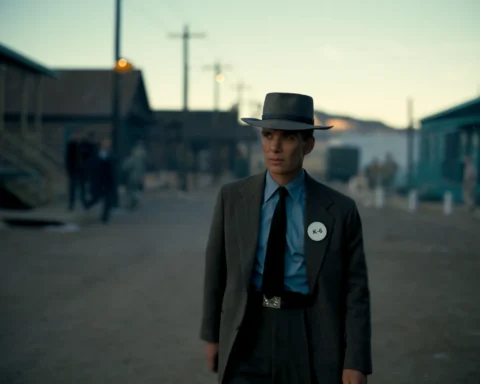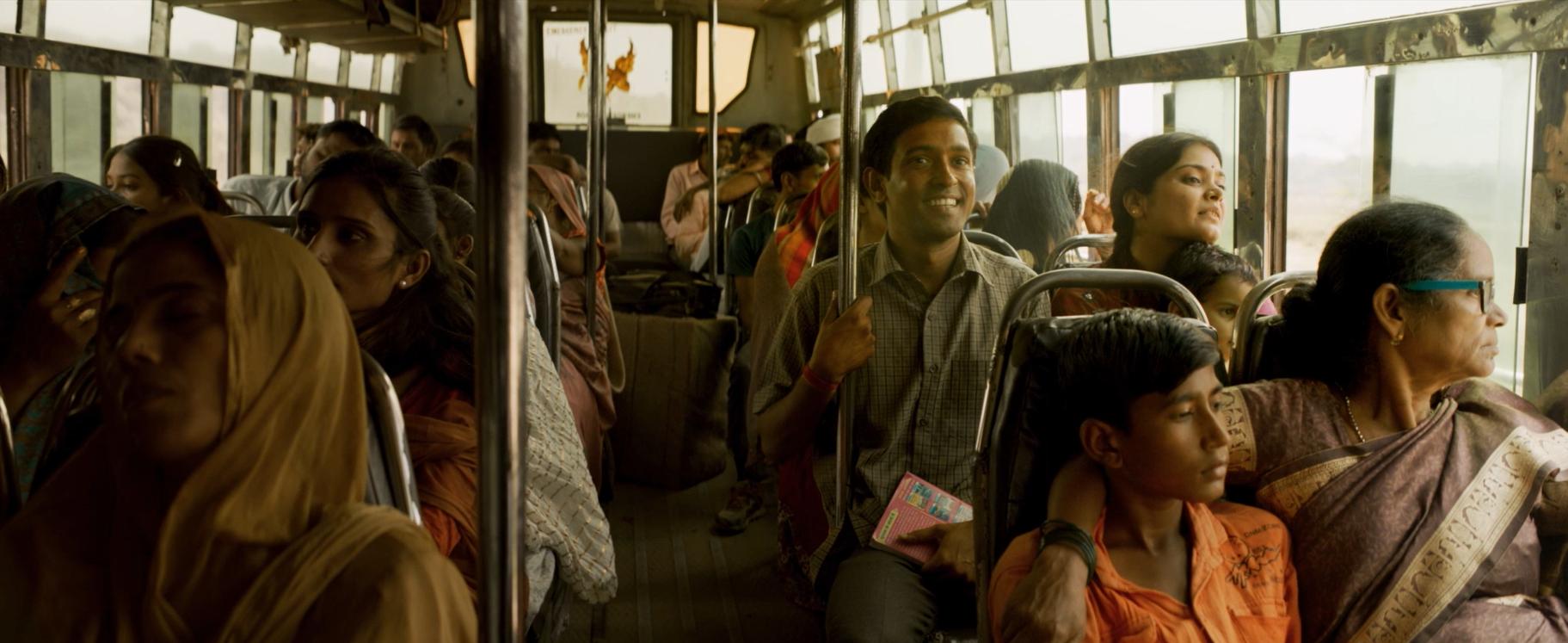Why do we watch movies? We watch movies to entertain us, educate us, and take us to places we can never imagine especially if these places are in the past. Godland is the new film by Director Hlynur Pálmason and it explores the connection between people, their faiths, and the land they live in during the late nineteenth century. The film is presented in the 4:3 aspect ratio which is interesting as it brings the characters and the landscape closer to the audience. It forces the audience to pay attention as everything is happening in the middle of the screen but also makes them think as to what is happening outside of this 4:3 frame. Godland is a study of man’s beliefs and it shows how the staunchest of believers also succumb to transgressions when everything around them changes. The mesmerizing Icelandic landscape serves as an unforgiving character that constantly reminds the audience how stunning yet devastating it can be at the same time.
The first shot in Godland shows a young priest Lucas (Elliott Crosset Hove) who is quickly walking with a sense of urgency. He is shown to have a meeting with his superior where he is given a mission to start a church in a remote part of Iceland. Lucas, whose body language suggests to be that of a very eager and enthusiastic person is ready to take on the arduous and dangerous challenges of this mission. He is also determined to complete the mission and listens carefully to the instructions provided by his superior Vincent (Waage Sandø), who is uncompromising in his mission objective of wanting the Church completed before winter. Lucas sets sail to Iceland with this heavy camera and tripod equipment. He begins to document the crew of the ship and is serious about his work. As the crew lands on the beach, Lucas starts walking and after a few steps just collapses with the weight of his equipment. This weight shows the burden of his task to travel across a country that has very different terrain, weather, people, and languages. He has no idea what to expect or he thinks he will be fine. This uncertainty is evident in everything he does. While taking a photo, he is not sure and is always second-guessing himself. The same goes with a conversation he has with his guide Ragnar (Ingvar Sigurðsson) who tells him the river they plan to cross is too deep but Lucas is adamant and wants to cross it today. His surety is only in reaching the end goal of his mission.

As they cross the river, Lucas’s translator drowns along with a large cross and the crew is forced to bury him. This leaves Lucas in a state of grief and he is unable to let go of this incident. He begins to replay his conversations and moments with his translator (Hilmar Guðjónsson) in his head. The wet, dry, unforgiving yet mystically majestic landscape is beginning to assert on him. He begins to fear for his life but his faith keeps him going. Later on, he falls off his horse and injures himself badly. He is taken to the village where the church is being built and is nursed back to health by a man named Carl and his family. Photography is a big part of this film. There are a lot of still shots where characters are posing for Lucas’s camera that we sometimes forget that we are watching a film. Lucas in many scenes tries to pose people but he is always unsure of what he wants, the kind of photo he wants to take but that doesn’t discourage him from not trying. When a marriage takes place inside the half-finished church, Lucas refuses to perform the ceremony. The faith he has in his God is strong and he does not want to intentionally do anything that might anger God. But, his relationship with his guide begins to change every day. His thinking is changing and so is his mannerisms and body language towards different people. In the harrowing beauty of Iceland, the film pits man against nature, and who will win makes up the rest of the film. The ending is well shot and the director and cinematographer have depicted it through a series of photos which perfectly ties up the whole film.
Every shot in Godland is as organic and real as it can ever be. The director has made this film with a fictional inspiration drawn from Lucas’s seven photographs and his own life experiences. Life in Iceland in the late 19th century has probably never been shown in a movie before and therefore, this is a unique idea. The question of faith is a recurring theme throughout the film. Lucas is more often than not being tested as he is only human. No matter how much resolve or belief a person thinks they have in their faith, if the same person is put in a different environment that tests them, sooner or later they are bound to break. The scenes that show the volcano eruptions and lava flowing are just a visual treat for the eyes.

The cinematography by Maria von Hausswolff will keep you glued to the screen. Some of the imagery is just sumptuous and the simplicity in the shots has to be applauded. The camera only moves when it is needed but when it does move, the pace and subtlety of the camera movement is something to admire. The 360-degree shot of Ragnar playing after the wedding is one of the best shots in the film. Hlynur Pálmason wants us to be part of that celebration. He wants us to enjoy the moment the same way the people in the scene did. It is as close as it gets to being there with them. The music by Alex Zhang Hungtai is hardly present but when it does turn up, it is haunting and blends well with the ambient sound in every scene. A lot of the film has no music and ambient sound is the background score. As we approach the end credits, Alex cranks up his music and it takes off. The lack of a background score is not a problem as there are plenty of poems and songs sung by the various characters throughout the film. This transports the audience to the period in the history of Iceland. Moreover, photography has no sound, and that has been honestly portrayed in the film.
Godland shares some similarities with Martin Scorcese‘s Silence which has a different storyline but it does follow two priests as they go to another country to spread the word of God. What sets Godland apart is the portrayal of Iceland and how a quiet stunning place can be equally horrifying for an outsider to traverse. Godland is the English translation for the Danish word ‘Vanskabte Land‘ which means Godforsaken Land or Malformed Land and would have been a more apt title for the film. But, probably for marketing purposes, it wouldn’t have worked with an English-speaking audience. The aspect ratio and framing are similar to Robert Egger‘s The Lighthouse which made me wonder if a black-and-white version of Godland would amplify the terrors experienced by Lucas in the film. I think a black-and-white version of this film will be a fascinating watch.
Godland has been shortlisted in the International Feature Film category at the 96th Academy Awards. It is available on streaming via VOD on all major streaming platforms.





